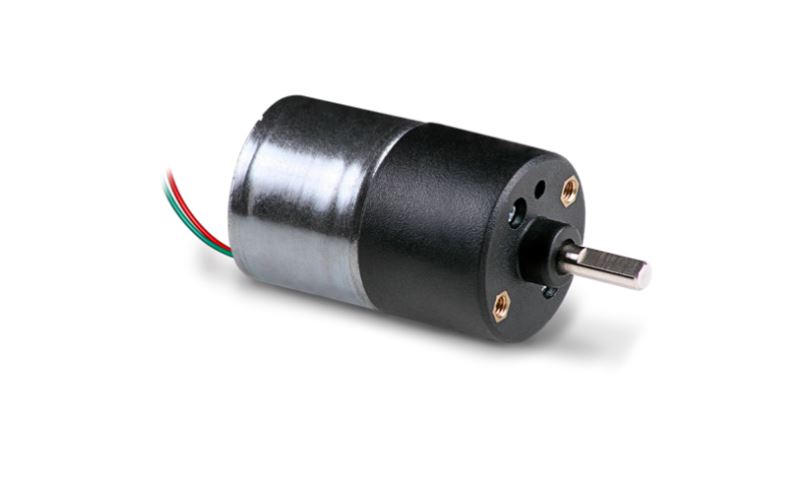A gear motor is a mechanical device consisting of an electric motor and a gearbox, differing from a DC motor for lower RPM and higher torque. Discover more.
Micro Motors specializes in the manufacture of miniature gear motors, both with brushes and without brushes, and stepper motors.
A gear motor is a mechanical system consisting of an electric motor and a gearbox containing a series of gears. The function of the gearbox coupled to the motor is to reduce its speed and increase its torque to do a given job at a given speed.
The addition of the gearbox on the motor and the extremely simple design that can be easily adapted to the customer’s needs, increases the usability of gear motors and makes them highly versatile in any field of mechanical automation (industrial and home automation, printers, vending machines, just to name a few applications). The motor can be with brushes, brushless, or stepper.
Definition of gear motor
A gear motor is a motor designed with an integrated gearbox. Gear motors function as torque multipliers and speed reducers thus requiring less power to move a given load. The design of the gearbox structure, type of gears, lubrication and type of coupling affects its performance.
The concept of the gear motor is inspired by the patent of the German designer and entrepreneur Albert Obermoser, who in 1928 invented the so-called Vorlegemotor (gear motor). Since then, the basic model has been progressively improved and new models of gear motors have been created.
 How the gear motor works
How the gear motor works
Depending on the number and type of gears, different combinations of output RPM and torque can be achieved. With fewer gears, the result is higher RPM and lower torque and vice versa. It can be mounted in any position.
The gear motor structure regulates whether the gear motor is suitable for light, medium or heavy loads and short or long operating periods. Depending on the internal gear structure and the reduction stages, the gear motor varies the speed on the output shaft. The reduction ratio is the ratio between the input speed and the output speed; therefore, it is one of the most important characteristic values of the gearbox. The power and load capacity of a gearbox depends on the maximum torque it is capable of transmitting and it is measured in the physical unit Newton meter [Nm].
What is the difference between a gear motor and a DC motor?
You may wonder what is the difference between a gear motor and a DC motor and which one is best suited to your production. Therefore, here is a brief overview of the main differences between the two solutions. A DC motor has high RPM and low torque, while the gearbox reduces the RPM and increases the torque, making it more versatile.
Advantages of the gear motor
What are the main advantages of using a gear motor?
- Multiplies the torque of the motor. This feature is very important because it allows high torque even in a small space.
- It reduces the speed of the input motor. Micro Motors gear motors have a variety of reduction ratios to select the appropriate speed for your application.
- Availability of multiple combinations of both gearbox and motor at different voltages.
- Having an integrated motor + gearbox solution makes it easier for the end user to develop the machinery and allows him to be able to apply it within his project without wasting time searching for individual parts.
- It is a ready-to-use all-in-one solution that requires no alignment work by the end user.
Applications of a gear motor
The possible applications of gear motors are many.
Here is a short list of possible applications:
- In the automation industry gear motors are used in the entire production process, assisting in the movement of components for the manufacturing of the final product. For example, in the food & beverage industry, they handle bottles, packaging and boxes and are used to fill containers or select empty packages. The same kind of application can be found in other sectors such as medical, pharmaceutical, cosmetics.
- Heat recovery and ventilation: flow regulation
- Telecommunication: adjustment of antennas
- Security: locking, safety and deterrence systems
- Horeca: vending machines, food & beverage dispensers, coffee machines
- Plotters and Printers: mechanical and colors settings
- Robotics: robots, robotic cleaners, lawnmowers, rovers
- Home automation and fitness
- Automotive industry: special applications (shock absorber and sunroof adjustments)

 How the gear motor works
How the gear motor works 

